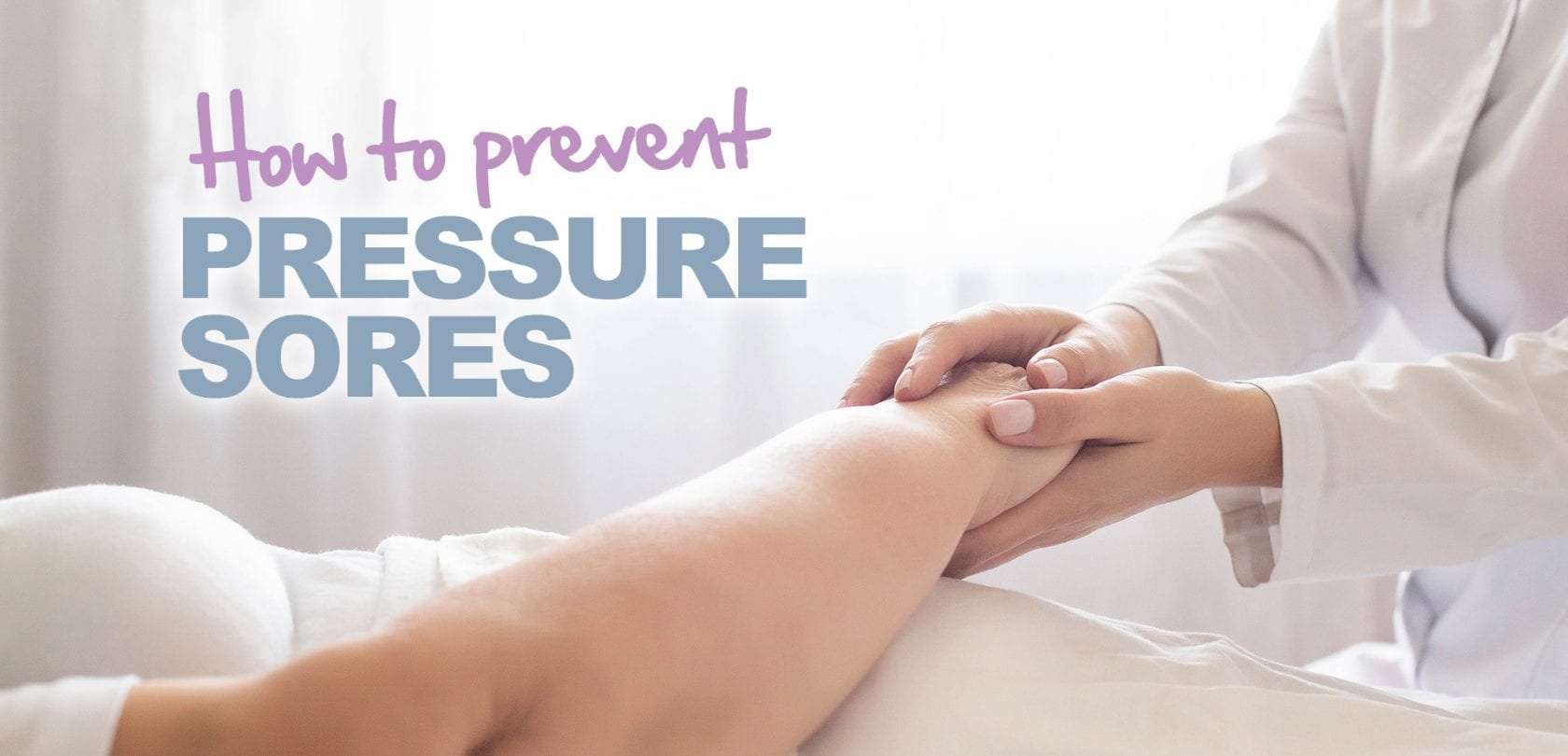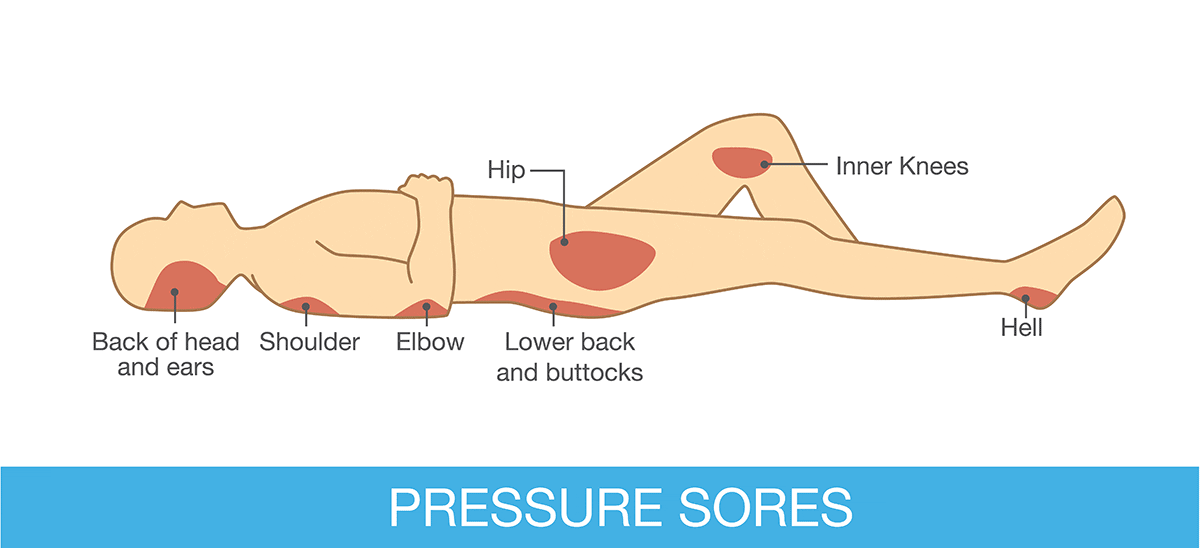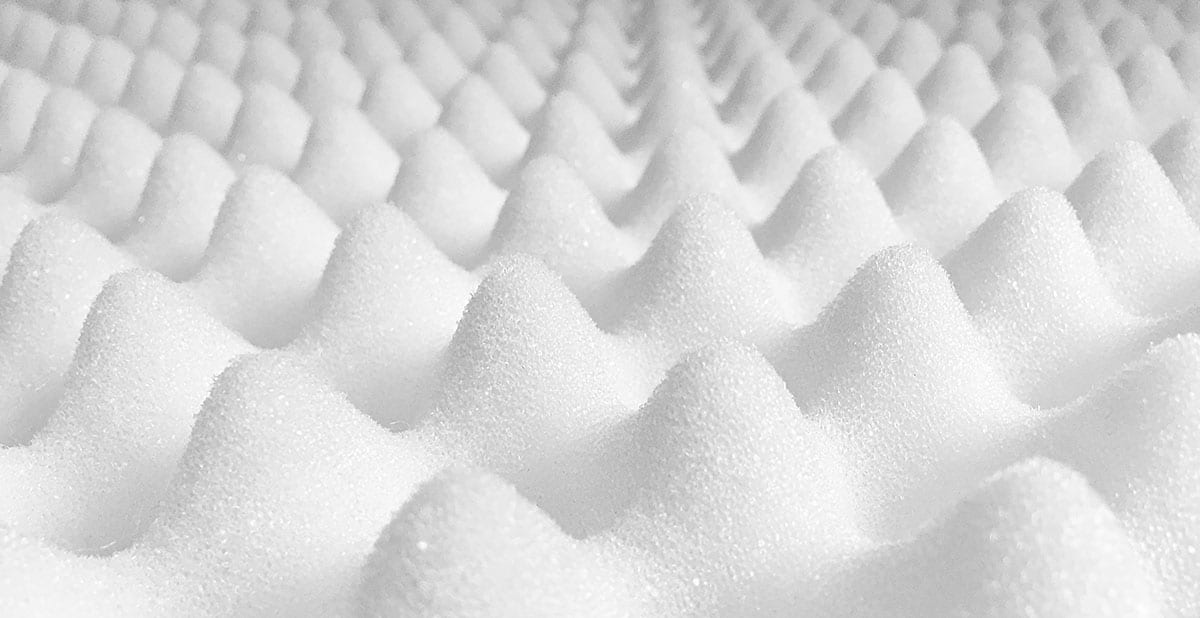
How can you prevent bedsores on a bedridden patient?
Most people who share a bed with someone will at one time have been woken by their restless sleeping partner. We may have had a great night’s sleep and feel well rested when we wake, but our bodies have been on the move for most of the night! It is natural to toss and turn, change positions and fidget and all these movements are healthy for our body. However, bedridden patients do not move as much and so are at risk of developing further health issues such as bed sores that can have serious consequences. Find out what they are, why they are caused and how to prevent pressure sores at home.
What Causes a Pressure Sore?
When we move around in our sleep, we are redistributing our weight to different muscles and parts of our body. As such the pressure that any one part of our body is under when in contact with the bed changes which helps to keep us healthy. For many millions of Americans this does not happen naturally. People with disabilities, a long-term illness, in post-operative care or simply in their twilight years are often not able to move around when they sleep. As a result pressure builds up on certain areas of their body, particularly those areas that are more ‘bony’ such as your shoulders, buttocks and heels as they tend to be the most weight baring points of the body when lying down.



In as short a time as a couple of hours, the pressure created can close small capillaries and so limit the blood supply to the skin and the tissue directly underneath it. Blood supply is vital to all parts of the body to keep tissue and organs healthy as it brings the vital oxygen needed and removes the harmful metabolic waste material. A sustained period without blood supply will lead to the start of a bed sore or decubitus ulcer. As a result, they are also common in people with conditions that cause poor blood circulation (e.g. low blood pressure.)



Why worry about bedsores?
As with many conditions there is a range of severity of bed sores which can have mild or severe impacts on the patient. At the very least they are painful and can prolong recovery due to interrupting rest. However as open wounds they leave the patient vulnerable to infections which themselves can then spread deeper into the skin and get carried around the body by blood. These infections are not always easily treated by antibiotics as many are now resistant to this treatment. As such the infection causes more issues for the patient than the bed sore itself.
Large bed sores can also cause loss of fluid which can often leave patients dehydrated. In extreme cases they can cause death. A study by the National Pressure Injury Advisory Panel (NPIAP) found approximately 2.5 million patients develop pressure ulcers each year. Perhaps more worryingly, 60,000 die as a direct result of bed sores or decubitus ulcers due to infections these cause in the bloodstream such as septicaemia.
How do you Prevent Pressure Ulcers?
Dr. Madhuri Reddy, from the Harvard-affiliated Hebrew Rehabilitation Center in Boston led a research paper into preventing bed sores which was published in the Journal of the American Medical Association (JAMA) in 2006. Her numerous studies found “Given current evidence, using support surfaces, repositioning the patient, optimizing nutritional status, and moisturizing sacral skin are appropriate strategies to prevent pressure ulcers.” (JAMA 2006) So let’s break this down a little more to find out how each can be achieved:
- Repositioning – the study found that this is probably one of the most effective actions to take to prevent bed sores. If they are created through lack of movement causing a limit of blood supply to the skin, then frequent turning or repositioning of the patient is a good method of prevention. So that patients can remain in position the carer places them in, foam wedges for positioning are used to support the body. The best positioners for bedridden patients are made from high density orthopedic support foam that does not crush under weight, are curved to contour to the body for added comfort and have a wide buttress for added strength. The caregiver needs to be safe in the knowledge that the position they place their patient in is where they will stay.



- Support surfaces – the structure of the mattress or the surface the patient is lying on can also make a large impact on preventing bed sores. In many hospitals there are air filled mattresses that change ‘shape’ and so pressure areas on the body. These are great as pressure points can be relieved regularly without manually moving the patient into a new position, however the price tag is usually too high for effective patient management in the home. An alternative, and one that shows almost as good results as the air-filled mattresses in Dr. Reddy’s research, is using a mattress topper with an egg crate top. This type of mattress has far less touch points on the patient’s skin and so ease the pressure placed on the body when lying down.



- Skin care – If a patient has dry skin then this is more likely to suffer from friction from the bedding. To try to keep this to a minimum by moisturizing patients to prevent friction tears in their often delicate skin. More research needs to be carried out as to what substance to use as a moisturizer but until this happens, any PH-neutral body lotion is going to reduce dry skin and friction, compared to not moisturizing at all.
- Optimizing Nutrition – it is widely recognized that protein and amino-acids play an important role in the repairs of the body’s tissues and muscles. It is reasonable to suggest therefore that it will also help in the maintenance of healthy skin and the repair of any sores that appear. In Dr. Reddy’s largest study there is evidence to suggest that a high protein diet together with amino-acid supplements do have a beneficial effect for bedridden patients.
Whilst these methods are preventative, for some patient’s bed sores may still occur. For their best management, examine the patient’s skin regularly for red or warm patches, changes in tissue consistency or bruising that may a have the potential to turn into sores. If any of the above indicators are seen, seek medical advice early for the best outcome.




